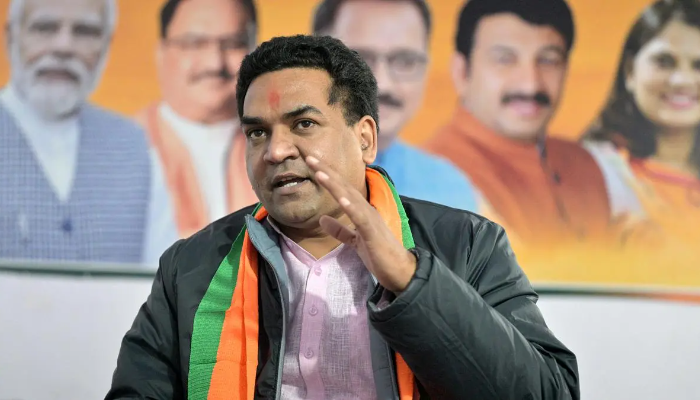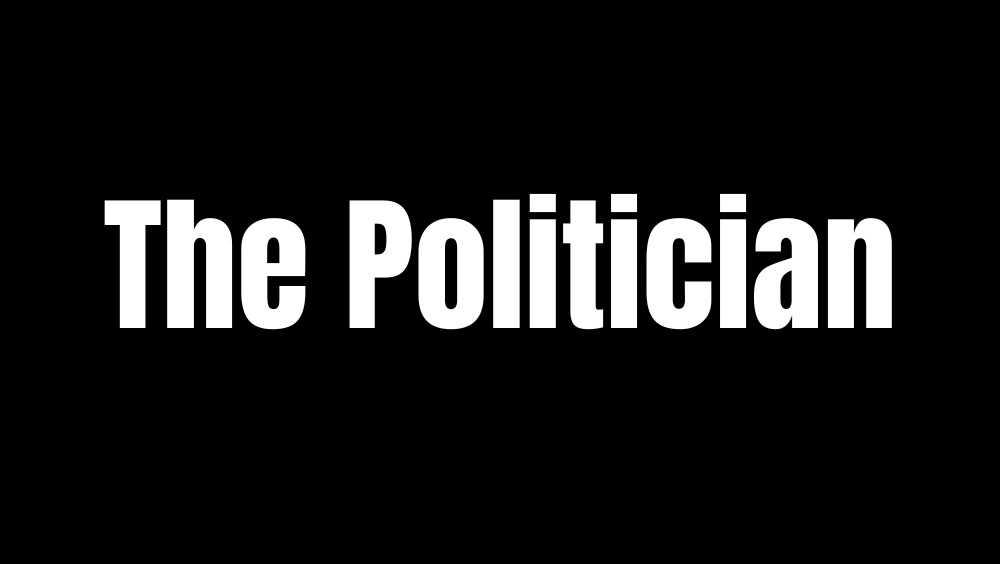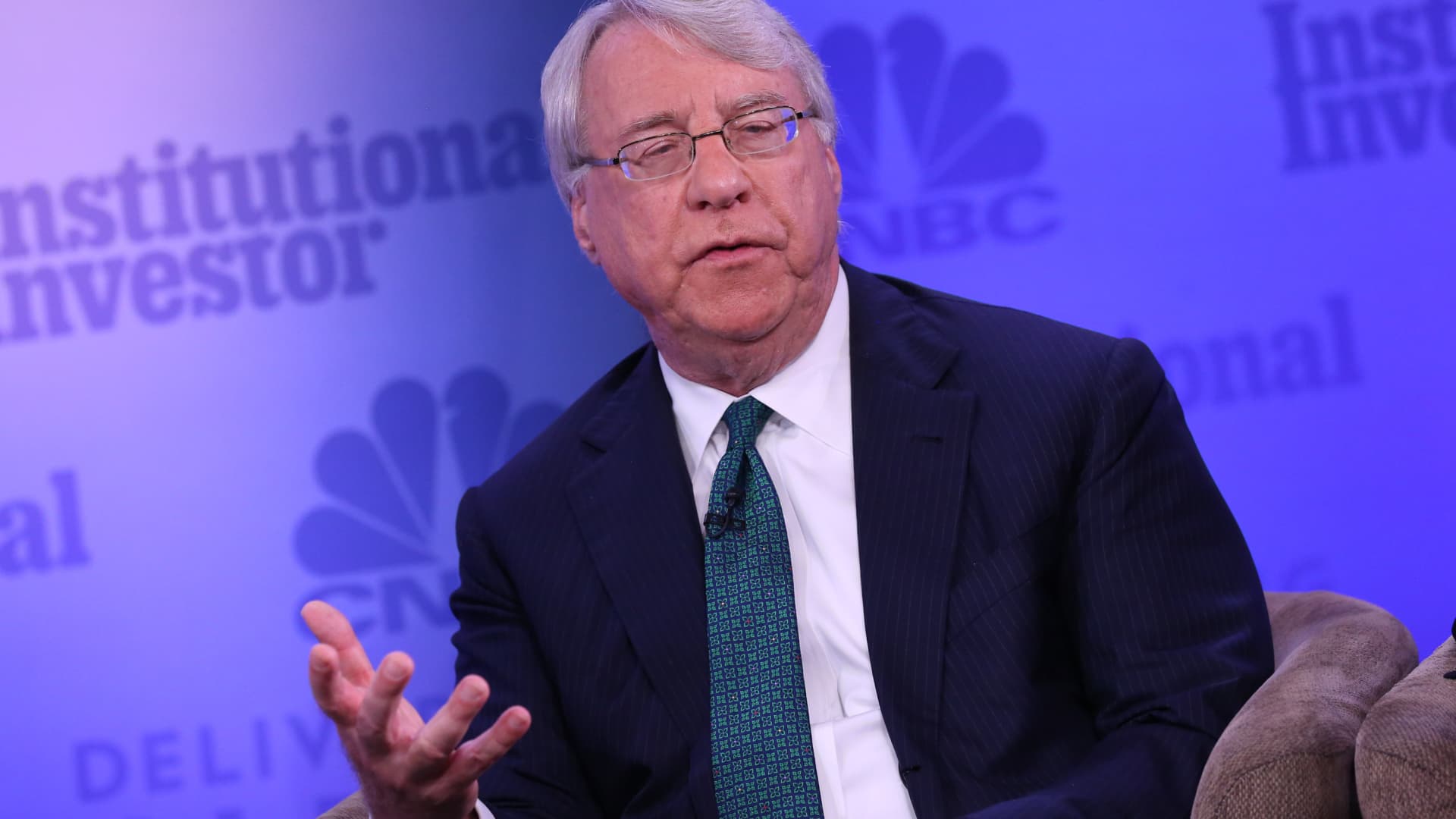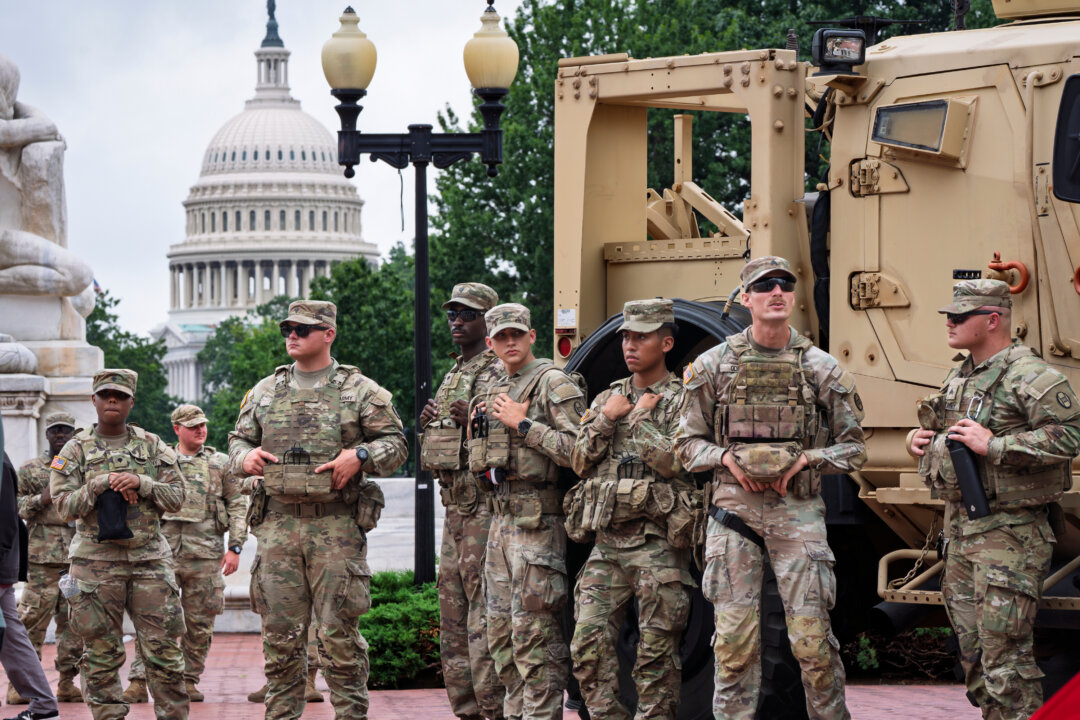Order to interrogate Kapil Mishra, investigate his ‘role’ in Delhi anti-Hindu riots set aside, petition spearheaded by ISIS poster boy Mehmood Paracha: What the court said
On 10th November, a Delhi court overturned a magistrate’s judgement which ordered Delhi Police to probe the alleged involvement of Bharatiya Janata Party leader and Delhi minister Kapil Mishra in the 2020 Delhi riots. Special Judge Dig Vinay Singh (MLA/MP cases) of Rouse Avenue Court pronounced that the magistrate exceeded his jurisdiction by asking for a further inquiry into the matter. The lower court earlier ordered the probe due to a complaint that alleged that Mishra’s remarks had fuelled the violence, which was contested by him and the authorities. The case stemmed from a complaint by Mohammad Ilyas, who served as the secretary of the outlawed Popular Front of India (PFI) and fought the 2020 Delhi assembly elections from Karawal Nagar on a ticket from its political wing, the Social Democratic Party of India (SDPI). He was represented by ISIS (Islamic State of Iraq and Syria) poster boy Mehmood Pracha, while senior attorney Mahesh Jethmalani was Mishra’s counsel. OpIndia has a copy of the judgment. Magistrate’s court passed an illicit order, overlooked police ATRs: Revision petitions The main argument had been that the court went beyond its authority because a “Special Court” was assigned to investigate the Delhi riots under the aforementioned FIR, and it had already been notified via a notification dated 3rd August to try offences under the National Investigation Agency (NIA) Act. The Special Court is the only one with the ability to order an additional inquiry and hence the decision infringed upon its jurisdiction. The magistrate’s court was aware of the ongoing case and evidence of pre-riot conspiracy, as is clear from the order and materials such as WhatsApp discussions from months prior to the riots. It rejected jurisdiction for four incidents and declared that the corresponding trial courts were suitable forums but disregarded the Special Court’s jurisdiction for the matter involving Kapil Mishra and gave directives. The order was also unlawful because it instructed the DCP North-East to carry out an additional inquiry. However, a magistrate is only allowed to direct an investigation to the Station House Officer (SHO), not a higher official, in accordance with 175 (3) BNSS, which is akin to Code of Criminal Procedure (CrPC) section 156(3). The order was disputed on legal, procedural, and evidentiary grounds. The court committed procedural errors by neglecting established guidelines on multiple enquiries and police status reports. Notably, Mishra was found to have no participation in two Action Taken Reports (ATRs). One was from DCP North East (24.09.2024) and another from ACP Special Cell (21.10.2024). The court ordered further inquiry despite the ATR of the Special Cell’s explicit declaration that Kapil Mishra had “no role in the initiation or orchestration of the violence” and a group seemed to have “deliberately attempted to falsely implicate him.” Likewise, a second FIR for the same incident was also against the law. The judge violated the law, displayed bias against Mishra Additionally, it was asserted that by examining the material and challenging the character of Mishra’s interrogation, the court violated Section 175(3) of the BNSS through holding an improper mini-trial on a preliminary application. Its authority is restricted to assessing whether a prima facie cognisable offence has been committed, while it continues to thoroughly examine the evidence in the case that is awaiting trial before the Special Court. The court passed unwarranted remarks like “there are numerous flaws in such theory building and much guesswork, assumptions, and interpretation has undergone which are questionable. [sic]” It was maintained that its remarks were grave and unfair to Mishra, which caused false media stories implying that a formal complaint had been filed against him. The court also made factually unfounded assertions and attempted to paint the BJP leader as the “immediate cause of the riots” due to his presence in the region on 23rd February 2020, despite proof to the contrary. It included WhatsApp conversations from several groups that were specifically created for protest and scheduled to take place during the United States President Donald Trump’s visit to Delhi. It was further stressed that the state’s comprehensive evidence before the court convincingly showed a premeditated scheme that predated Mishra’s purported appearance in the area. Furthermore, it was submitted that by adding the element of “violence” by Mishra, the court artificially strengthened the original complaint, even though there was no such mention of this. Moreover, the complainant purposefully modified the description from “vehicles” to “carts” to obstruct the identification or verification of the same. Mishra’s proximity to his home was mistakenly interpreted as involvement and was termed unreasonable because local presence by itself does not imply involvement. It was



On 10th November, a Delhi court overturned a magistrate’s judgement which ordered Delhi Police to probe the alleged involvement of Bharatiya Janata Party leader and Delhi minister Kapil Mishra in the 2020 Delhi riots. Special Judge Dig Vinay Singh (MLA/MP cases) of Rouse Avenue Court pronounced that the magistrate exceeded his jurisdiction by asking for a further inquiry into the matter.
The lower court earlier ordered the probe due to a complaint that alleged that Mishra’s remarks had fuelled the violence, which was contested by him and the authorities.
The case stemmed from a complaint by Mohammad Ilyas, who served as the secretary of the outlawed Popular Front of India (PFI) and fought the 2020 Delhi assembly elections from Karawal Nagar on a ticket from its political wing, the Social Democratic Party of India (SDPI).
He was represented by ISIS (Islamic State of Iraq and Syria) poster boy Mehmood Pracha, while senior attorney Mahesh Jethmalani was Mishra’s counsel. OpIndia has a copy of the judgment.
Magistrate’s court passed an illicit order, overlooked police ATRs: Revision petitions
The main argument had been that the court went beyond its authority because a “Special Court” was assigned to investigate the Delhi riots under the aforementioned FIR, and it had already been notified via a notification dated 3rd August to try offences under the National Investigation Agency (NIA) Act. The Special Court is the only one with the ability to order an additional inquiry and hence the decision infringed upon its jurisdiction.
The magistrate’s court was aware of the ongoing case and evidence of pre-riot conspiracy, as is clear from the order and materials such as WhatsApp discussions from months prior to the riots. It rejected jurisdiction for four incidents and declared that the corresponding trial courts were suitable forums but disregarded the Special Court’s jurisdiction for the matter involving Kapil Mishra and gave directives.
The order was also unlawful because it instructed the DCP North-East to carry out an additional inquiry. However, a magistrate is only allowed to direct an investigation to the Station House Officer (SHO), not a higher official, in accordance with 175 (3) BNSS, which is akin to Code of Criminal Procedure (CrPC) section 156(3).
The order was disputed on legal, procedural, and evidentiary grounds. The court committed procedural errors by neglecting established guidelines on multiple enquiries and police status reports. Notably, Mishra was found to have no participation in two Action Taken Reports (ATRs). One was from DCP North East (24.09.2024) and another from ACP Special Cell (21.10.2024).
The court ordered further inquiry despite the ATR of the Special Cell’s explicit declaration that Kapil Mishra had “no role in the initiation or orchestration of the violence” and a group seemed to have “deliberately attempted to falsely implicate him.” Likewise, a second FIR for the same incident was also against the law.
The judge violated the law, displayed bias against Mishra
Additionally, it was asserted that by examining the material and challenging the character of Mishra’s interrogation, the court violated Section 175(3) of the BNSS through holding an improper mini-trial on a preliminary application. Its authority is restricted to assessing whether a prima facie cognisable offence has been committed, while it continues to thoroughly examine the evidence in the case that is awaiting trial before the Special Court.
The court passed unwarranted remarks like “there are numerous flaws in such theory building and much guesswork, assumptions, and interpretation has undergone which are questionable. [sic]” It was maintained that its remarks were grave and unfair to Mishra, which caused false media stories implying that a formal complaint had been filed against him.
The court also made factually unfounded assertions and attempted to paint the BJP leader as the “immediate cause of the riots” due to his presence in the region on 23rd February 2020, despite proof to the contrary. It included WhatsApp conversations from several groups that were specifically created for protest and scheduled to take place during the United States President Donald Trump’s visit to Delhi.
It was further stressed that the state’s comprehensive evidence before the court convincingly showed a premeditated scheme that predated Mishra’s purported appearance in the area.
Furthermore, it was submitted that by adding the element of “violence” by Mishra, the court artificially strengthened the original complaint, even though there was no such mention of this. Moreover, the complainant purposefully modified the description from “vehicles” to “carts” to obstruct the identification or verification of the same.
Mishra’s proximity to his home was mistakenly interpreted as involvement and was termed unreasonable because local presence by itself does not imply involvement. It was pointed out that the evidence indicating the conspiracy started in November 2019, which contradicted the court’s observations.
The Special Court acknowledged the conspiracy by accepting the charge sheet, dismissing bail requests, and rejecting several appeals, some of which were dropped and others of which were withdrawn. The Supreme Court repeatedly overturned the high court’s ruling once it was contested there.
Ambiguous order, suffers from a material flaw: Rouse Avenue Court
Special Judge Dig Vinay Singh outlined that the order had a major jurisdictional issue and unlawfully called for “further investigation” into the “first incident” that the complaint claimed happened. The term “further investigation” was used by the magistrate’s court on several occasions, but it never stated that the verdict mandated the probe and filing of a formal complaint about the same.
He conveyed that if a magistrate does not specifically mention the same when directing an investigation under Section 175(3) BNSS, the order should at least make it clear that its requirement and direction are for “investigation.” The law requires the officer-in-charge of the police station to register the FIR for an unveiled cognisable offence, however, the order only suggested and did not specify.
The court was aware that the final report resulting from the FIR was already before a Special Judge’s superior court, and hence, it should have been clear if the intention was to register a fresh official complaint.
“Judicial orders, especially those affecting rights and potentially affecting someone’s liberty, must be unambiguous. Any such order that could impact someone’s rights and liberty must be explicit and free from conflicting interpretations,” the special judge announced.
The recurrent use of the phrase “further investigation” in the decision resulted in different interpretations by both parties in the absence of such a particular observation for investigation or the registration of a new FIR. He noted, “The fact that the impugned order has been interpreted differently by both sides indicates that it suffers from a material flaw.”
Illegal, improper, and incorrect judgement
Singh stressed that as the matter was pending trial before a higher court, the magistrate should have refrained from making personal comments and highlighted that “it lacked jurisdiction to entertain the complaint, as the matter is already under trial before a higher designated court.” He shed light on the magistrate’s contradicting conclusions and judicial overreach.
Singh expressed that the magistrate’s “explicit statement that, for the other four incidents, it cannot be tasked with the duty of monitoring the investigation as the learnt trial court of the particular police station would be the appropriate forum, along with his comprehensive re-evaluation of the investigation into the ‘first incident,’ reflects an inconsistent application of judicial principles regarding oversight of ongoing investigations and demonstrates an overreach into an area reserved for the designated court.”
“The impugned order thus reveals a serious jurisdictional error that makes the order illegal and unsustainable concerning the ‘first incident.’ It is illegal, improper, and incorrect, as it exceeds jurisdiction and constitutes a case of jurisdictional overreach,” Singh determined.
Complaint lacks major details, no mention of violence
The court mentioned that when a magistrate evaluates an application under Section 175(3) of the BNSS (Section 156(3) of the CrPC), the primary task is to ascertain whether a cognisable offence is disclosed and if police assistance is needed for the investigation, “rather than extensively scrutinising and dismissing the findings of an ongoing, complex investigation concerning a larger conspiracy.”
“The scope of that provision is minimal, focusing on whether the allegations amount to a cognisable offence and whether the collection of evidence by the police is required,” it further emphasised. The judge pointed out that the number of Mishra’s associates was also not stated in the complaint’s claims. The magistrate deduced that more than five people were there in order to prove a cognisable violation from Mishra’s testimony in the FIR.
The application did not reveal the commission of a cognisable offence, which is a prerequisite for initiating legal action. The magistrate used comparisons and deductions from Mishra’s interrogation in the broader conspiracy case to presume the same.
“Not only did the complainant not explicitly state in the application of being present at the scene during the incident in question, but the specific time of the incident is neither mentioned nor is it clear whether it occurred in the morning, afternoon, or evening. Though in the complaint to the police, the time of the incident is described as noon,” the judge highlighted.
He pointed out that even Ilyas’s statement missed information about the incident’s timing, precise location at Kardampuri, number of associates and additional details. Furthermore, he made no mention of any “violence” committed by Mishra other than cart vandalism.
Nevertheless, the magistrate’s order “introduced the act of violence by Kapil Mishra and his associates despite the complaint and the statement of 24.09.2024 not alleging any violence.”
Unnecessary comments, inconsistency, and selectivity in judgement
“The allegations by the complainant are there that the DCP and the police force were in connivance with Kapil Mishra and his associates, or that they acted in concert, or that the DCP extended threats to life, but the complainant nowhere even claimed that the warning to end protest was ‘criminal intimidation’ by the DCP or anyone else,” the judge emphasised. The court also observed the several-month delay in submitting the initial application following the incident.
Singh stated that the magistrate reviewed and commented on cases that were already on trial before a higher court, rather than concentrating and restricting observations to whether the “first incident” has been investigated or not, and if it was cognisable offence requiring inquiry.
He added that the assertions like the prosecution’s theory-building had ‘numerous flaws’ and involved ‘guesswork, assumptions, and interpretation’ prematurely adjudicated the merits of an ongoing trial.
It was highlighted that the order mainly depended on how Mishra’s statements during questioning were interpreted. The magistrate’s authority to instruct an investigation was exceeded by his thorough scrutiny of the interrogator’s method of inquiry.
“The order also shows inconsistency and selectivity, as it notes that the magistrate lacked jurisdiction over four of the five incidents because they had already been investigated under different FIRs. In contrast, for the fifth incident, it ordered further investigation while appreciating the evidence collected during the investigation, particularly regarding the examination of Kapil Mishra,” Singh reiterated.
Order fundamentally flawed and unsustainable
The judge questioned whether it was necessary or justified to examine the information or inquiry carried out in the FIR if the magistrate was convinced that the incident on 23rd February 2020, was a distinct incident.
“That itself suggests that what the court intended was further investigation, a term he repeatedly used in his order, rather than a new investigation into the incident,” Singh added and outlined that it was an intrusion into the jurisdiction of a superior court, the court of original cognisance, alongside a grave jurisdictional error.
“Unwarranted, speculative, and prejudicial remarks have been made in the order concerning an investigation pending trial before a higher court. There is a conflation between re-investigation and further investigation in the impugned order,” he pointed out, and expressed that “thereby making the impugned order legally challengeable and unsustainable.”
Singh stated that section 175(4) BNSS would apply to the complainant’s claims that the DCP and the police force conspired with Mishra and his aides, they acted in concert, or the DCP threatened to kill people, but that the necessary prerequisites were not met.
“Therefore, obtaining a report from a superior officer was essential before any investigation could start, and the public servant (DCP) should have been heard. This was not done. Therefore, even if the impugned order were for a fresh FIR and investigation, it would not have been legally sustainable due to the absence of compliance with Section 175(4) of the BNSS,” he added.
The judge, hence, concluded that “the impugned order, viewed from any perspective, is fundamentally flawed, illegal, and improper, rendering it unsustainable.” The instruction for additional inquiry into the incident referred to as the “first incident” in the same verdict has been set aside.
Background of the case and impugned order
The anti-Hindu Delhi riots claimed 53 lives and resulted in the launching of more than 750 FIRs (First Information Reports). On 6th March 2020, Delhi Police’s Special Cell filed FIR No. 59/2020, indicating and looking into an extensive plot behind the unrest.
Meanwhile, Ilyas wrote an email on 15th March 2020 and submitted a typed complaint on 17th March, claiming Mishra and accomplices vandalised Muslim and Dalit carts in Kardampuri on 23rd February, presumably with the help of the police. DCP (Deputy Commissioner of Police) Ved Prakash Surya allegedly threatened to shoot demonstrators if they didn’t stop, according to the complainant.
On 21st August 2024, he submitted an application to the Chief Judicial Magistrate of the Rouse Avenue District Court under section 175(3) Bharatiya Nagarik Suraksha Sanhita (BNSS) to register a formal complaint. The impugned order was issued in response to this application.
The complainant described five distinct occurrences that happened on different days in February 2020 and claimed that police officers were either complicit or did not take action. The DCP North East and the ACP (Assistant Commissioner of Police) Special Cell provided reports on the instances.
Police officers asserted that all of the reported incidents were already covered by open FIRs. Furthermore, Special Cell stated that they looked into the allegations against Mishra, and discovered that he was not involved in starting or planning the violence. However, Ilyas insisted that his statement was never recorded and the police had falsely accused certain people while clearing the culprits.
The magistrate’s court demanded “further investigation” into the incident involving Mishra and his companions after conveying that the former’s police questioning was insufficient. It added that certain people, including the DCP, should also be probed. This part of the order has also been challenged.
The current order was reserved on 25th October after Mishra put forward a plea against the lower court’s judgment to file a formal complaint against him in relation to the 2020 unrest in the national capital.





















































































